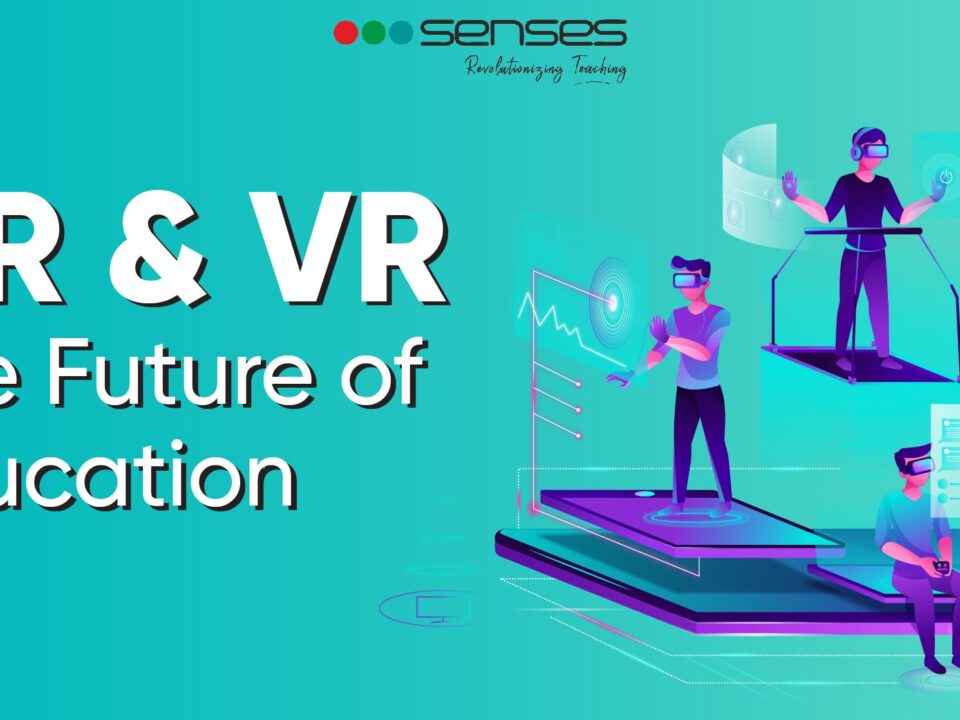4 ways Interactive displays boost classroom-based learning

4 ways Interactive displays boost classroom-based learning
The use of interactive technology has become a baseline for effective education in classrooms of the 21st century. In today’s’ hyper connected world that we live in learners and educators are already immersed with technology all around in their regular lives, from smart phones to chrome books and IPads. Learning and source of knowledge is no more bound to the traditional books, chalk boards, classroom lectures and libraries, nor are the learning methodologies of the past equipped enough to develop citizens for the 21st century. The aware and evolved educators know that there is no silver bullet to teaching and imparting education.
Today’s classrooms leverage a variety of advanced technologies to boost academic performance improve engagement levels of students and make teaching more fun and interactive. Interactive displays represent a paradigm shift in the way students learn and teachers teach and interact. Backed by significant research and educator experience alike, interactive technology has now proven that the traditionally designed lecture-based classroom and associated models lack what is needed to prepare the Net Gen effectively for the 21st century. In one such research it was found that collaborative and group learning increases student success rate by 3.4 times.
It then becomes imperative to dig a little deeper and understand how and why interactive displays boost classroom-based teaching and learning.
1 Makes learning fun and dramatically increases student engagement
Vivid imagery, beautiful sound, multi-touch and gesture recognition on a high-end 75-inch display screen, voice recognition, compatibility with Android or windows operating systems, and many more features. Sounds inviting for your most ambitious entertainment room project. Isn’t it?
Imagine the level of interest and engagement if this piece of tech was available for your students in their classrooms and for the teachers to use instead of the chalk and black boards. This is beautifully summed up in the 2014 NMC report “The appeal of this innovation is that a learner can experience information presented in a variety of modes without the distance that traditional interfaces impose; in other words, nothing gets in the way between the user and the information. Students have the opportunity to truly interact with the content.”
According to a survey, increased student attentiveness and engagement is the number one benefit of interactive whiteboards according to teachers. 77% of teachers who have ever experienced an interactive panel consider this as a “Must Have” technology for classrooms.
2 Boosts social learning through collaborative teaching driven by technology
There are numerous studies and researches that have proven that collaborative and interactive activities in classrooms, supported by technology leads to much higher levels of socio-emotional skill development. This enhances active engagement, classroom discussions and significant improvement in confidence levels of students. This is a very critical element as these are the skills that the professional and business worlds look for. Increased involvement, self-confidence, and expression skills, through opportunities for students to use the most current technology to create dynamic presentations for class, and to participate in truly collaborative learning.
A survey comprising 85 teachers across 170 classrooms recorded a student achievement gain of 16 percentile points when Interactive white boards were used. And using intelligent interactive panels to reinforce information through visually engaging graphs, charts, videos and visuals the achievement gains rose to 31%
3 Truly equal learning environments for differently abled students
Interactive technologies have finally bridged the gap and provide a truly equal learning opportunity for differently abled learners and special needs students. Students feel more connected and engaged, students who are not extroverts become more involved. There are numerous features in the Senses Intelligent interactive panels that can significantly improve the engagement levels of special needs children in classes like closed-caption display, zooming, and adjustable wall mounts, voice recognitions, gesture recognitions etc. The plethora or interactive options and life like learning experiences, helps retain students focus and tune out distracting stimuli. It helps kinaesthetic learners, who can now learn by “doing things”, rather than being limited to taking in a lecture from their desk.
Based on the research of the NMC team “motion-based technology through smartphones, tablets, and even game systems allows learners to engage freely. Examples given in the report refer to children using multi-touch walls and interactive displays at museums, and teachers in Virginia using games with motion-based technology to improve the social and verbal communication skills of students with autism spectrum disorders”
4 Pre-loaded lessons specific to key subjects taught in classrooms
Get your hands on a truly intelligent interactive smart board and you get yourself features specific to key disciplines taught in classrooms, like physics, chemistry, maths, English, etc. For example, with the Senses IIP teachers can write any complex equation and the Formula Recognition feature automatically solves the equation and gives the answer in a readable format. Teachers can also solve graph functions, equations, and simulate lab experiment enhancing practical learning. How cool is that as a teaching and learning experience!
Watch this video
According to the 2014 NMC Horizon report, “Interactive flat panel touch displays provide some of the first steps in this new method of engaging students through gestures and touch, helping to seed the intuitive technologies of the future.” Today, the interactive white board is joined by a host of interactive display technologies that offer the ability to empower teachers, engage students and promote collaboration. From collaboration to more immersive learning, interactive technologies are and will continue to reshape the way we teach and learn.




I really appreciate the work you have done, you explained everything in such an amazing and simple way.